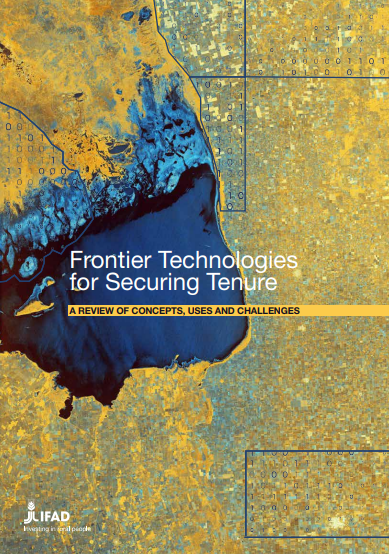Land tenure insecurity is a reality for a large proportion of the world’s farmers, especially those in lower income, developing contexts. Frontier technologies are new and emerging technologies that have the potential to disrupt and supplant existing processes. They create new opportunities for addressing this challenge.
This publication showcases a range of current frontier technologies that are being used in land tenure projects, as well as the associated benefits and challenges. The study reviewed twenty publications and conducted thirteen interviews with knowledgeable experts.
The study has been carried out by IFAD in collaboration with land tenure experts from the Food and Agriculture Organization of the United Nations (FAO).
It was possible thanks to the funding of IFAD’s Change Delivery and Innovation Unit, IFAD’s Sustainable Production, Markets and Institutions Division, and FAO’s Land Tenure Team.
READ STUDY
Especially pertinent in developing and customary land rights contexts, mapping customary land rights is a challenge that requires innovative and sensitive approaches. The involvement of the beneficiaries and relevant communities and government agencies is crucial for success. (page 6)
When it comes to mapping customary land rights, people can be suspicious of new technologies and
approaches, being fearful that they will be used to appropriate their lands (page 46)
In Malawi, this challenge was addressed by first mapping the extent of the chiefdom areas. Using satellite imagery, chiefs were able to settle disputes between their territories. This demonstrated the usefulness of the technology. Next, the same process was used to map out family holdings within chiefdoms and certificates were issued that linked families and individuals to the chiefdoms. (page 46)
The adoption of technical solutions should be needs-driven, rather than driven by the desire to use the latest technology. There should be balance between the possibilities of the technology and the social need. (page 51)
Investments in technology and personnel risk being wasted if sound maintenance and capacity concerns are not built into project planning from the beginning. The intended users need to have the technical competency to, for example, repair and maintain a UAV to continue drone-based mapping or maintain and update land records in a cadastral database. (page 51)


No comments:
Post a Comment